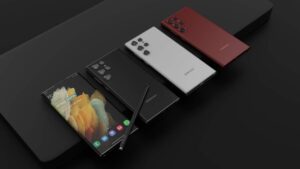
The 21st century gave rise to room manufacturers. And in 2020 the music industry finally admitted that the songs recorded in someone’s room were like being arrested in a studio filled with equipment worth of millions of dollars. This, of course, leads a lot of upscale studio equipment makers to try and enter in a home studio match.
The latest to make a leap is a universal audio. They are brands with more than 60 years of experience, whose equipment has been used to record several of the most iconic albums of all time. But, until recently the most affordable interface made by the company is $ 699 Apollo Solo – almost no type of money a beginner or casual hobby will fall. The volt series, however, throw away the company’s expensive DSP chips and focus on providing the basics with a few unique bends. The result is a collection of affordable audio interfaces that must be on the short list for home studio settings.
Volt lineup includes five models of single input volts of $ 139 1, up to $ 369 four volt inputs 476. Some features are different and the amount of the intricacies varies from the model to the model, but they share the same core including the 24-bit / 192 kHz audio converter And Preamp with “Vintage” mode that tries to reset PreamP UA 610 classic sound.
I tested two midrange models: $ 189 volts 2 and $ 299 volts 276. This is a two input interface. What separates the “76” version of the base model is some ergonomic tweaks and designs, and the inclusion of internal compressors modeled on the company’s 1176 limiting amplifier.
Before you even start pondering the compressor, the difference between volts 2 and 276 is immediately clear. 2 simple and utilitarian. It seems like most other interfaces in the range of sub $ 200. There is a pair of trs / xlr input combinations on the front, along with the button to control the gain of each channel there is a button to turn the 48V Phantom power to use the condenser microphone, vintage mode, and to switch between Line level and instrument level signal. Finally, there is a monitor volume knob, Jack headphones and buttons to turn on and turn off direct monitoring.
Around the back is MIDI in and out ports (something that is mainly absent from the top class Apollo interface company), out which is balanced to connect the studio monitor, USB-C port, 5V power jack (required when using it with iPad or other mobile devices) and other cellphones) and other cellphones , a bit strange, the switch life and death.












